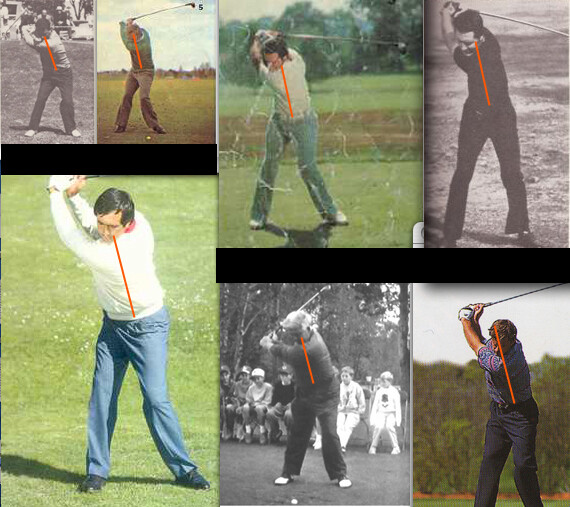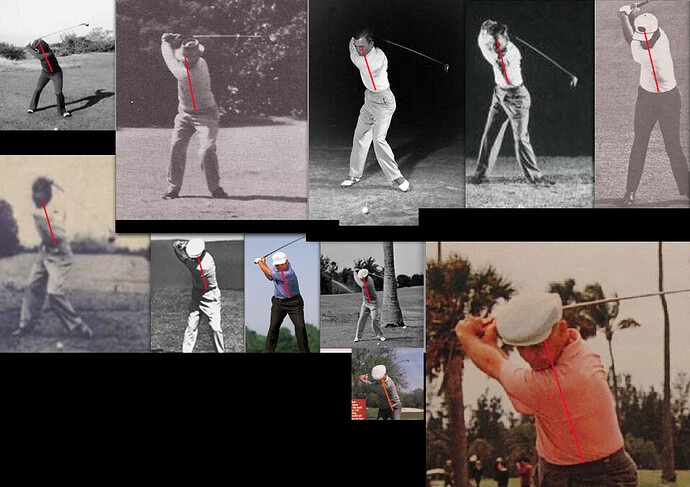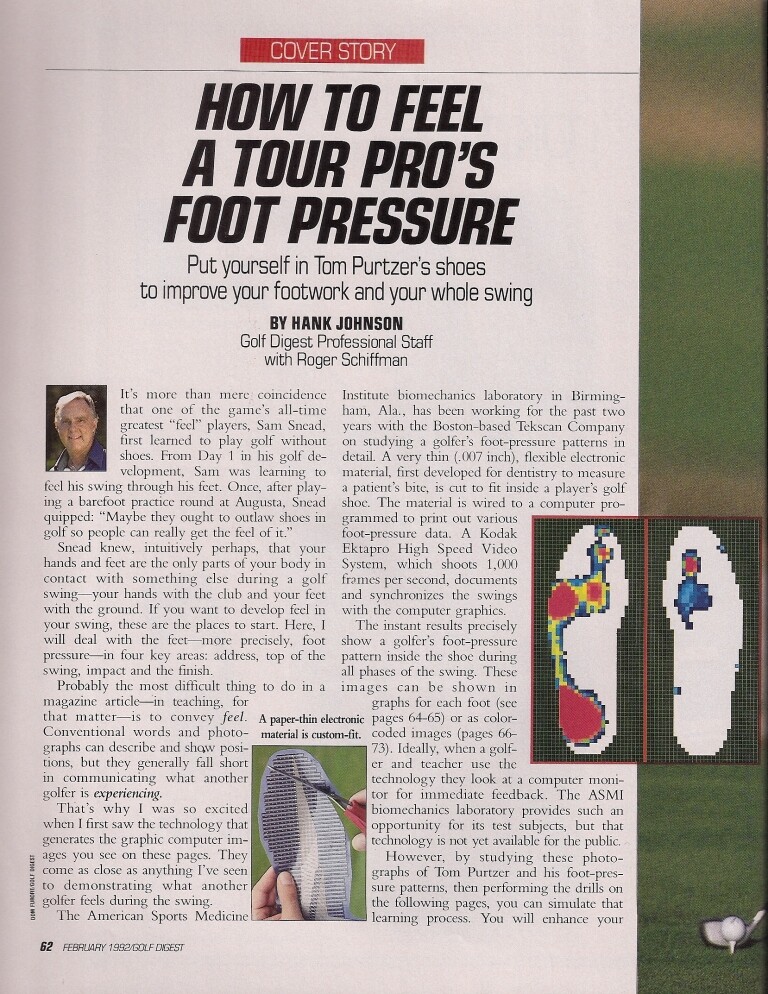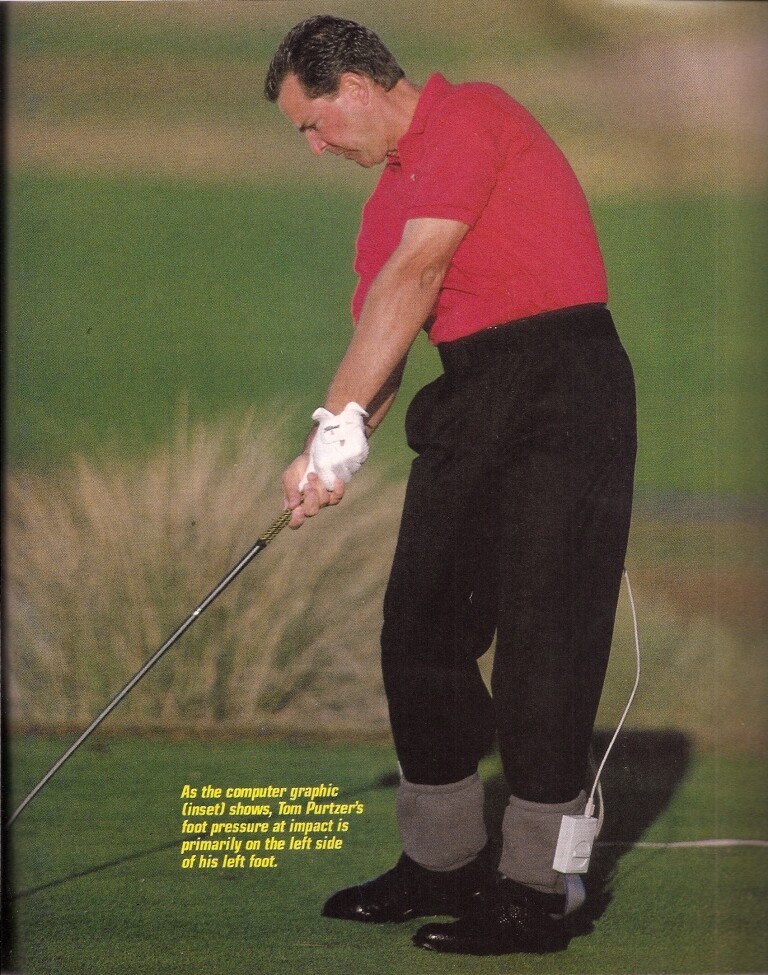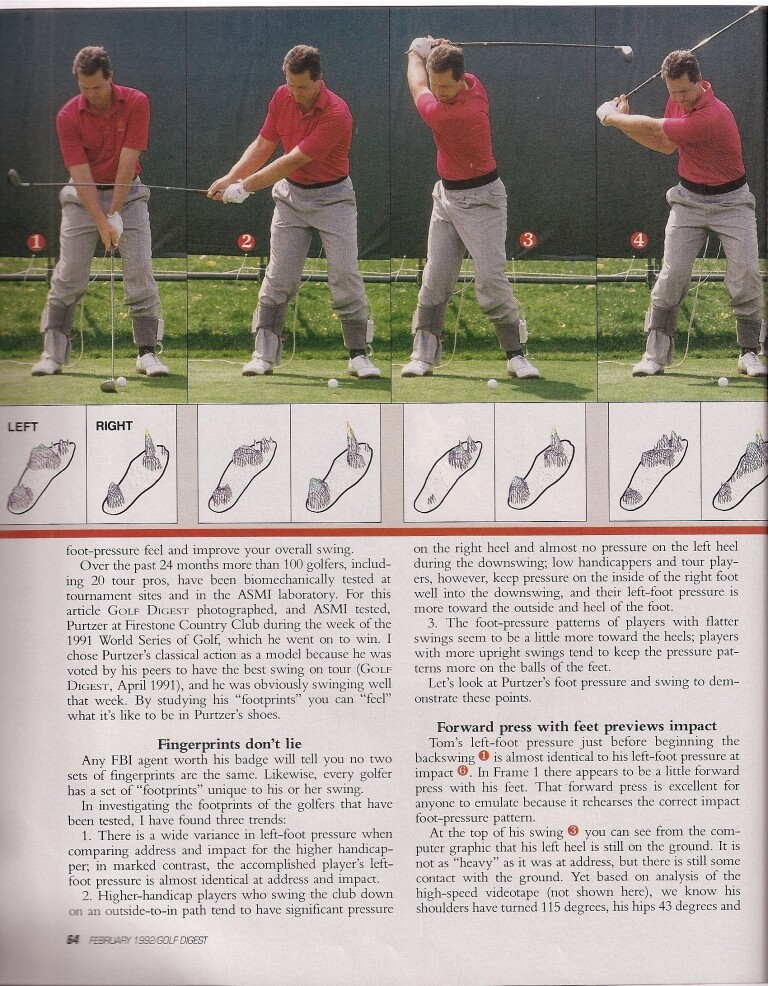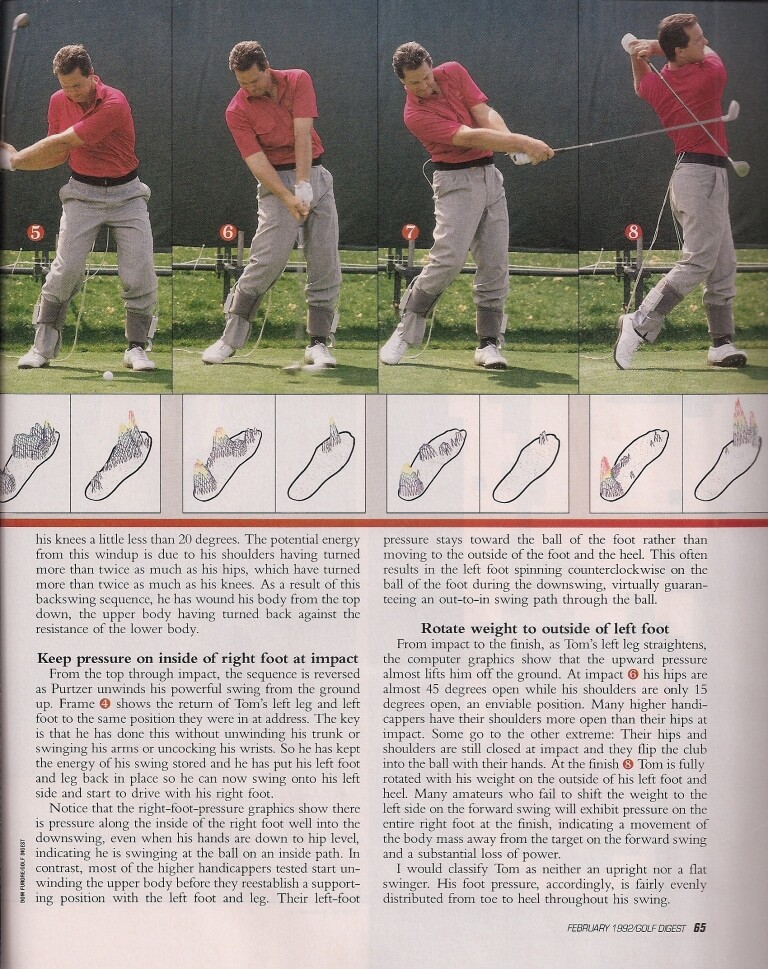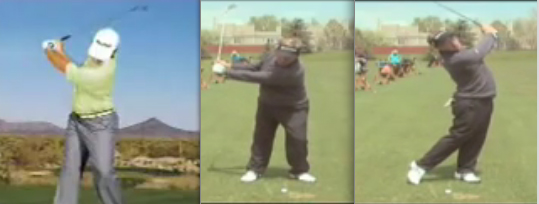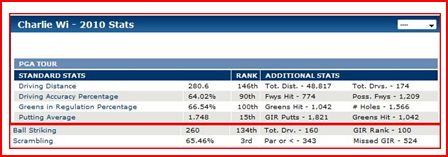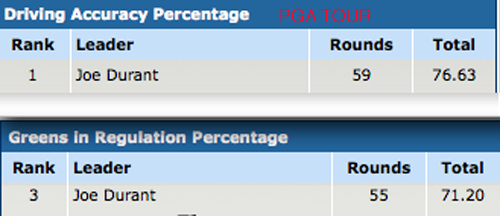I will always favor a golf swing technique that is geared more toward accuracy. I simply don’t see the wobbling of the torso from steep to tilted back via a hip slide as working efficiently toward an accuracy objective.
When you add a moving part to the equation, and something as vitally critical as the actual rotational procedure of the core that is going to power the golf swing… and you set that core into some kind of horizontal motion. To me it spells trouble.
I would agree that if I try to keep rotating my shoulders more and more at the top and I lose some of the cohesive tension within the body that would normally be created if I preserve spine tilt (away not toward)… I will certainly have a tendency start moving the spine or torso tilt toward the target… similar to S and T.
Assuming I do get there… now I have to reroute the spine back, because you will never see any kind of decent golfer with reverse spine tilt coming into impact. The arms need a path to travel on from behind the body for no other reason than the golf club is swung on an inclined plane. If this rerouting is not done exactly the same everytime, you have a problem.
The other issue for the better players is dealing with less than full shots. I very rarely hit a full iron shot. I would much rather hit a 6 iron from 150 if I have green to work with that try to kill a 9 iron. I would never want to feel any kind of hitch in the spine during my rotation because to vary the length of a shot with a given club, I simply limit torso rotational range of motion… but I DON’T vary the intensity of the strike itself. If I had to worry about my spine moving around laterally this would add a dimension to the golf swing that would not be beneficial in anyway.
This is one of the real secrets I learned from Moe, and he was very big on this technique of varying distance by simply varying the range of motion of the shoulder rotation… not the intensity of the strike. Moe told me he hit the ball just as hard with a wedge as a driver. Of course he hit the ball with his chest and legs as he would always say. It works.
Trying to feel some kind of variation in the spine wobble depending upon how far you rotate not only sounds like bad advice, but bad science also.
If you train the spine to rotate on a tight axis back and down… it simplifies the golf swing. The weight transfers to the right foot because the weight of the arms and club move to your right or P1. The only thing you have to do is bend the right elbow at some point. You can do this quickly or later, or even on the downswing if you prefer.
If your weight is on your left foot at the top… and then you slide your hips left from there… I don’t see how you are going to keep ground pressures into the right foot. Now maybe they don’t want you to do that… but this goes against every historical great golf swing. If you understand the necessity of having sufficient ground pressures in the feet especially the right foot, so that the torso can leverage against something post impact, then you would never want to cut off that lifeline to proper use of opposing forces in the golf swing.
As far as “the perception” of lag pressure moving on plane, I would have to disagree there, because the golf swing plane is simply not two dimensional. Any golf swing where the club moves above hip high is plane shifting… there is no “one plane” swing as seductive as that sounds. When the plane shifts, it shifts into the third dimension. When this happens, lines become arcs and ovals of “height, width, and depth”. The pressures applied to the shaft through the grip are not moving in a straight line back and forth… especially if you are hitting. As soon as you are deliberately trying to move the clubshaft on plane… flashlights, all that stuff… forget it… game over.
If you are trying to swing the club steep on the downswing, with your hands out in front of you, rather than coming from around and behind you… you’re making golf much more difficult than it needs to be.
